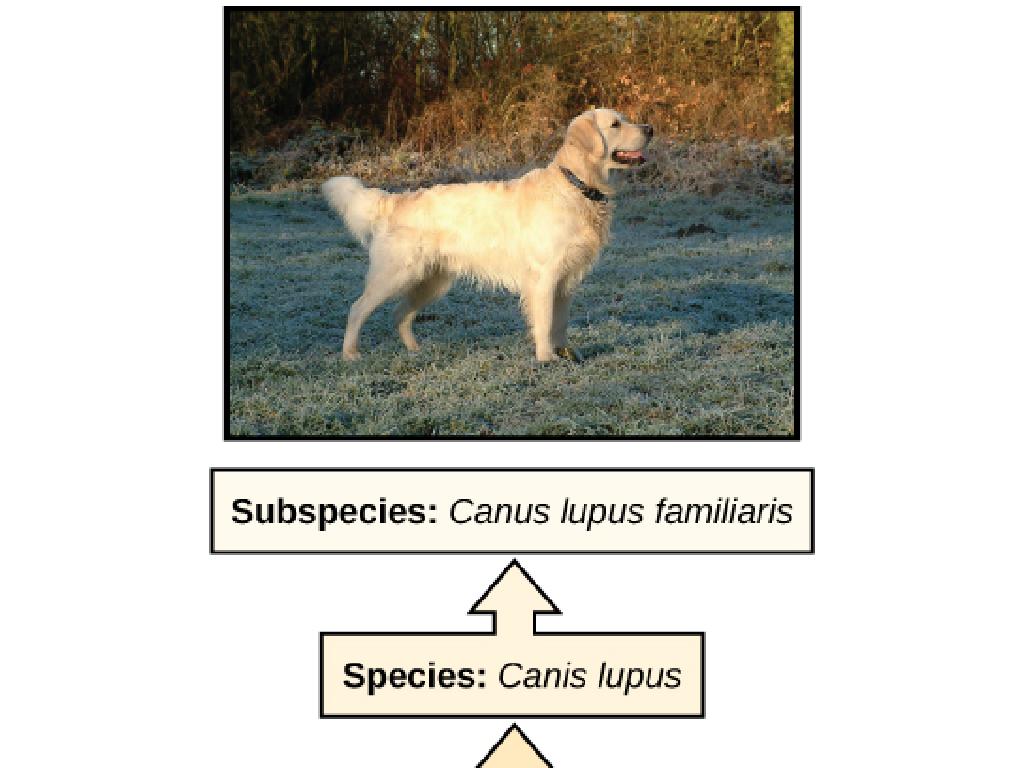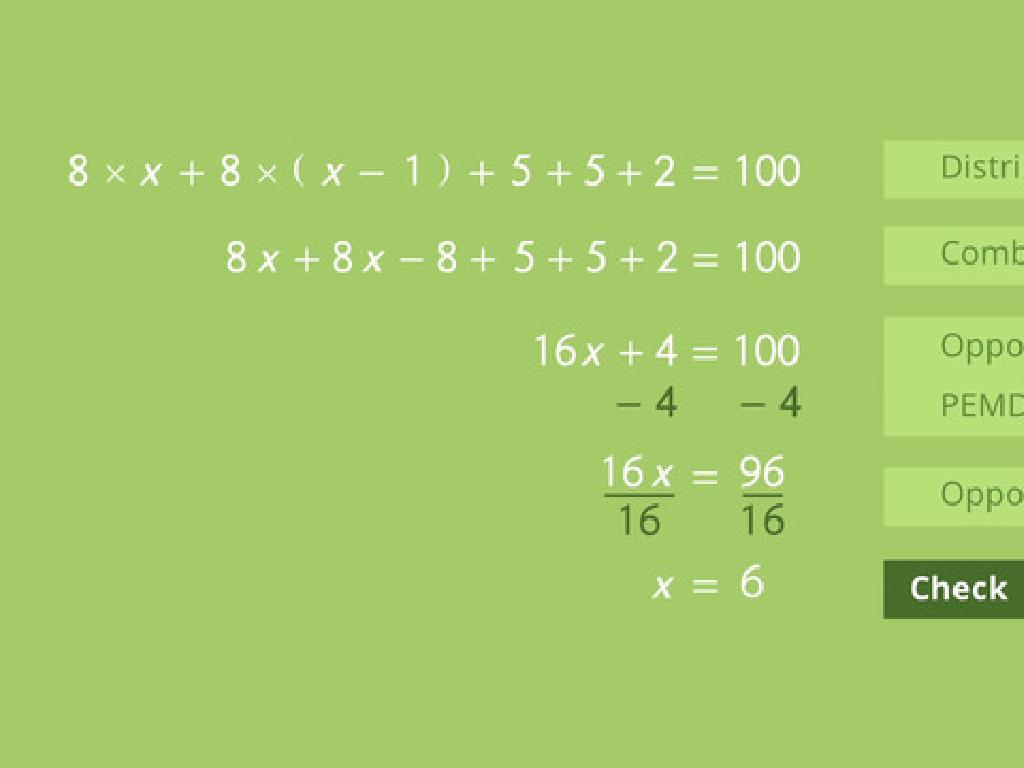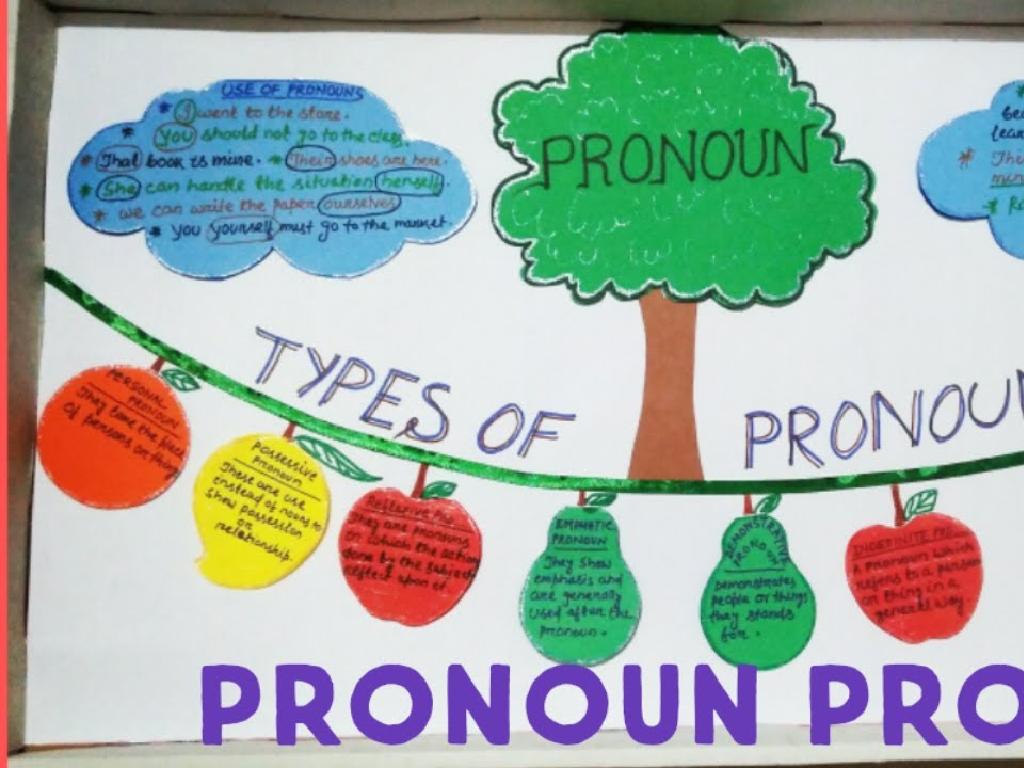Identify Repeated Addition For Equal Groups - Sums To 25
Subject: Math
Grade: Second grade
Topic: Repeated Addition
Please LOG IN to download the presentation. Access is available to registered users only.
View More Content
Welcome to Repeated Addition!
– What is repeated addition?
– Adding the same number over and over
– Repeated addition in daily life
– Like counting apples in baskets: 5 apples in 1 basket, so 5+5+5 in 3 baskets
– Steps to master repeated addition
– Learn the pattern and practice
– Practice sums up to 25
– Use objects like coins or blocks to add up to 25
|
This slide introduces second graders to the concept of repeated addition as a foundation for multiplication. Start by explaining that repeated addition is simply adding the same number multiple times. Give relatable examples, such as adding the number of apples in several baskets of the same size to show how it applies to everyday life. Guide the students through the steps of identifying the number being added and the number of times it is added. Encourage hands-on practice with physical objects to help them visualize and understand the concept, aiming for sums up to 25. This will prepare them to become confident in their addition skills and lay the groundwork for future multiplication lessons.
Understanding Repeated Addition
– Repeated addition explained
– It’s like adding the same number many times
– Example: Adding 3 repeatedly
– 3 + 3 + 3 equals what? Let’s add together!
– Visualize as jumping on a number line
– Imagine hopping over the same distance again and again
– Practice with sums up to 25
– Try adding 4 five times or 5 four times and see the pattern!
|
This slide introduces the concept of repeated addition, which is a foundational skill for understanding multiplication. Start by explaining that repeated addition is simply adding the same number over and over. Use the example provided to demonstrate this concept with physical actions, such as clapping or stepping, to show ‘jumps’ in addition. Encourage students to visualize these jumps on a number line. Finally, give them simple tasks to practice, ensuring the sums do not exceed 25, to solidify their understanding. This will prepare them for learning multiplication as repeated addition in future lessons.
Understanding Equal Groups
– Equal groups have same items
– Example: 4 groups of 5 apples
– Like having 4 bags with 5 apples in each
– Each group must be identical
– Repeated addition for equal groups
– Add the number in each group: 5+5+5+5
|
This slide introduces the concept of equal groups as a foundation for understanding repeated addition. Start by explaining that equal groups contain the exact same number of items, much like having the same number of apples in several bags. Use the example provided to illustrate this point. Emphasize that each group must be identical in size for it to be considered equal. Then, transition to explaining how repeated addition is used to find the total number of items across all groups by adding the number in each group together multiple times. For instance, if there are 4 groups of 5 apples, we add 5 four times. This concept will help students understand the basics of multiplication as repeated addition. During the class, engage students with hands-on activities where they can form equal groups with classroom objects and practice adding them repeatedly to find the total.
Repeated Addition with Equal Groups
– Understanding equal groups
– Example: Apples picked over days
– If we pick 5 apples each day, how many in 4 days?
– Adding groups: 5 apples for 4 days
– 5 apples/day x 4 days = 5 + 5 + 5 + 5
– Count by fives to find the sum
– Counting 5, 10, 15, 20 helps us add faster!
|
This slide introduces the concept of repeated addition as a method to find the total number of items in equal groups. Start by explaining what equal groups are and how they relate to repeated addition. Use the example of picking apples to make it relatable for second graders. Show them how to add the same number repeatedly to find the total, and then introduce the shortcut of skip counting by fives to reach the same answer more efficiently. During the class, have students practice with different numbers and sums up to 25, and encourage them to use their fingers or counters to help with the counting.
Practice Time: Repeated Addition
– Let’s solve examples together
– Use objects for addition
– Count pencils or blocks in groups
– Pair up to solve problems
– Work with a classmate on addition
– Aim for sums up to 25
– Add numbers like 5+5+5 or 4+4+4+4+4+5
|
This slide is designed to be interactive and encourage collaborative learning. Start by demonstrating how to use repeated addition with everyday objects, such as pencils or blocks, to create equal groups. Encourage students to work in pairs to foster teamwork and communication. Provide them with a set of problems that involve adding equal groups until they reach sums of up to 25. For example, they could add 5 groups of 5 pencils to make 25. Monitor the class as they work, offering help and praise. The goal is to solidify their understanding of repeated addition as a concept and to prepare them for learning multiplication as repeated addition.
Patterns in Repeated Addition
– Discover patterns with addition
– Look for sequences in adding the same number
– Patterns make addition quicker
– Recognizing patterns can speed up our math
– Use patterns to guess next sums
– Knowing patterns helps us tell the sum before adding
– Practice with sums up to 25
|
This slide introduces students to the concept of using repeated addition to find patterns, which can make the process of adding quicker and more efficient. By recognizing these patterns, students can predict future sums without having to add each time. For example, if we repeatedly add 5 (5, 10, 15, 20, 25), we quickly see the pattern of 5s and can predict the next number will be 30. Encourage students to practice with different numbers, always ensuring the sums do not exceed 25, to reinforce the concept. During the next class, engage the students with hands-on activities where they can create their own patterns and share with the class.
Your Turn to Teach: Repeated Addition
– Explain repeated addition
Tell a friend how adding the same number over and over is like having groups of that number.
– Use objects for addition
Gather items like blocks or crayons to add up in groups.
– Work together to understand
Discuss with your friend to make sure you both get it!
– Sum up to 25 with equal groups
Make sure your total doesn’t go over 25. Try 5 groups of 5!
|
This slide is designed to encourage interactive learning among students. They are tasked to explain the concept of repeated addition to their peers, using tangible objects to demonstrate the process. This peer-to-peer teaching method reinforces their understanding of the concept as they articulate it to others. The activity should be monitored to ensure that students are correctly grouping objects and understanding that repeated addition is another way to represent multiplication. Encourage them to help each other and ask questions if they’re unsure. Summing up to 25 with equal groups provides a clear limit to the activity, making it manageable and focused.
Class Activity: Addition Art
– Create art with repeated addition
– Make a picture using equal groups of objects
– Use stickers/stamps for groups
– Each sticker or stamp represents one group
– Write your addition sentence
– Add up the groups to write the sentence
– Share your art and math
|
This activity combines creativity with math to help students understand repeated addition with hands-on practice. Provide students with stickers or stamps and ask them to create a picture by making equal groups. Once they have their groups, guide them to write an addition sentence that sums up to 25. For example, if they use 5 stickers in each group and make 5 groups, they will write 5 + 5 + 5 + 5 + 5 = 25. Encourage students to explain their art and how they used repeated addition. This will help solidify their understanding of the concept. Possible variations for different students could include using different numbers of groups or different items to represent the groups, as long as the sum does not exceed 25.
Celebrating Repeated Addition!
– Repeated addition mastery
– Counting in jumps
– Like hopping the same distance over and over
– Practice leads to perfection
– The more you add, the better you get!
– Keep practicing beyond 25!
– Try with bigger numbers for more challenge
|
Congratulations to the students for learning about repeated addition! It’s important to reinforce the concept that repeated addition is similar to counting in jumps of the same size. Encourage them to continue practicing with sums up to and beyond 25 to solidify their understanding. Suggest fun activities like hopscotch or jumping rope to make the concept of ‘jumps’ more tangible. Remind them that practice is key to becoming confident in math, and celebrate their progress so far!






